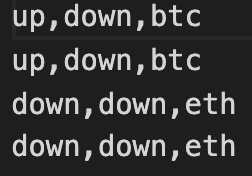Since the last status report, many hours were put into the mining proxy that we will not get back. The original plan was to use the same getwork protocol that is used in the Open Source FPGA Miner and bridge the protocol connection with the stratum mining proxy. This path was filled with dependency issues and different work arounds since that miner is meant for Windows and relies on root command, something I don’t have control over on the ECE machines and limited by my own resources locally for tools and dependencies. Even when I got the mining proxy to finally run on the ECE machines, the miner wasn’t able to connect to the proxy, perhaps with some ip address issues, so instead of driving more dead hours into debugging this, we moved on. However, the ultimate reason we decided to no longer continue with this getwork bridging was because this was only going to solve the communication problem for Bitcoin. The same solution was not going to work with Etereum, or any other currency for that matter. Instead, I decided to directly communicate with the stratum protocol, something I guess could be argued that we did in the first place. We didn’t because nobody had experience with the stratum protocol or its parent protocol, JSON RPC. I was able to find some documentation about the protocol and some miner implementations that use the protocol. So at this point in time, we have a very basic communication protocol that can at least receive requests from the mining pool.
Aside from that, I also worked on the decision making process, constructing the decision tree and the scripts necessary to gather the data for training and inference. The decision tree is built upon the historical data we pull from the Binance API. I took the historical klines code from the webapp and pulled as much data as I could to create the training file. The data is formatted currently as price_change_btc, price_change_eth, coin. The coin is ultimately what the miner should have mined. This decision is currently crudely made saying that the miner should mine bitcoin if the price change for bitcoin is up and ethereum otherwise. The model is then used every 10 seconds for inference. Work to be done here is to add more attributes for the decision tree to split on, improve the label generation for training, and process the decision more to not output a coin specifically, but a spread of which coins to mine (probably with some mechanism to prevent it from always predicting the same spread).
Setting up the Raspberry Pi has proven to be a little more problematic than I would have hoped. Setting up the internet with my home wifi is worse than with CMU-DEVICE since there is at least some documentation about how to do it on CMU-DEVICE, my home wifi uses some third party that has no documentation. However, I did try to set it up on campus with the guide, but to no avail. I have another plan to set up the internet since William was able to ssh into the pi, but that will have to wait after the status report. Additionally for work for next week, I hope to finally create the modules to send data from the RPI to the FPGAs to finally start bridging between our different parts. I guess as an administrative thing, as a group we finished the design review document and we each also separately did our ethics assignment.
Some inferences after training:

Sample training data (Data Format):

